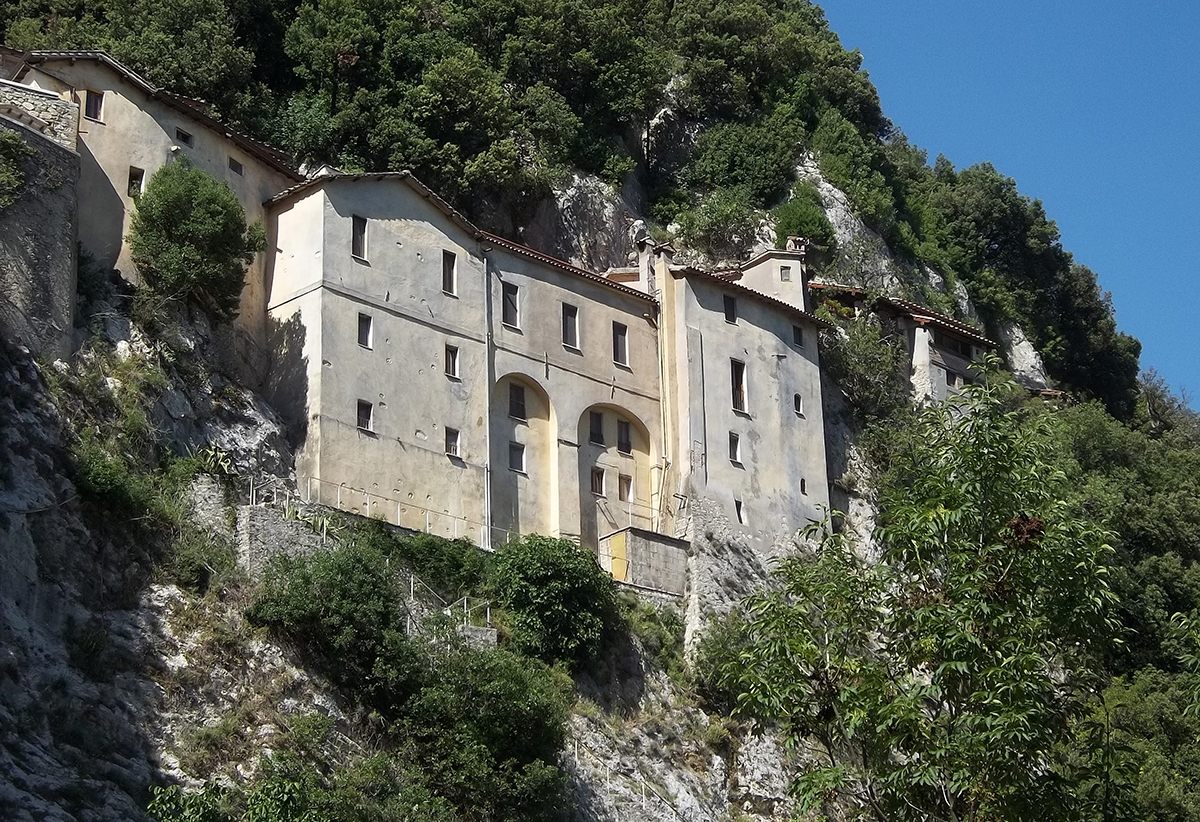Pilgrims flock to Greccio, Italy, where the saint recreated the first creche.
Lenten Campaign 2025
This content is free of charge, as are all our articles.
Support us with a donation that is tax-deductible and enable us to continue to reach millions of readers.
While they were [in Bethlehem], the time came for her to have her child, and she gave birth to her firstborn son. She wrapped him in swaddling clothes and laid him in a manger, because there was no room for them in the inn.
(Luke 2:1-7)
The history of the creche, or Nativity scene, is connected to a small town in the Rieti Valley in Greccio, Italy, where St. Francis of Assisi reenacted the first live Nativity scene.
St. Francis had a deep devotion to the Feast of Christmas. Thomas of Celano, his first biographer, said he referred to it as “the feast of feasts” and he celebrated it with “unutterable devotion.”
The first Nativity scene in Greccio, Italy
So passionate was Francis about the Feast of Christmas that in 1223, three years before he died, he did something altogether novel: he set out to recreate the birth of Jesus.
The setting was Greccio, a small village in the Rieti Valley about 90 kilometers (55 miles) from Rome. With the assistance of a local knight named Giovanni, Francis chose a cave on a cliff for the Mass.
Nothing like this had ever been done before.
In the early Church, the “feast of feasts” had always been Easter – the Paschal Mystery that saved humanity from sin. Yet Francis neither changed nor intended to change this order of precedence among the feasts. His desire was simply to highlight and relive the historical, human dimension of the birth of Christ.
Francis told Giovanni: “I wish to enact the memory of that babe who was born in Bethlehem: to see as much as is possible with my own bodily eyes the discomfort of his infant needs, how he lay in a manger, and how, with an ox and a donkey standing by, he rested on hay.”
Through the visual presence of the animals, the hay, and the manger, the scene came to life. The people gathered were able to enter into the mystery of the Incarnation in an entirely new way.
In Francis’s era, religion tended to be lofty. Masses were difficult to understand for most people, as the liturgies were in Latin and the preaching was theological.
Bringing the message of Christmas to the people
Yet St. Francis preached to the people “about the birth of the poor King and the poor city of Bethlehem.” When he looked down at Christ, he saw a “little child sleeping soundly in the manger.”
Afterwards, an altar was constructed over the manger and a small church built around the grotto.
A tradition began each year of recreating the Nativity scene of Jesus in Greccio. In time, the tradition spread to other parts of Italy and people everywhere began to adopt the reenactment of Christmas.
Take a pilgrimage to Greccio
Today Greccio is visited by numerous people each year. Pilgrims are charmed by the expansive Rieti Valley and the intriguing hermitage nestled on a cliff.
Once inside the hermitage, the grotto can be visited where St. Francis recreated the first creche. Beyond the grotto is a dormitory and cave where St. Francis slept.
Next to the old church is a modern one with a display of hand-crafted creches from all over the world. The craftsmanship is impressive.
Particularly striking are displays from Naples, which reached its “golden age” in the 1700s. Remarkably detailed scenes of daily life in the 18th century are all connected to the Christmas crib, which finds itself somewhere in the scene.
The message is that the birth of Jesus was not an event that took place remotely in a faraway age and place; rather, our Savior is with us here and now.
During this period of joyful expectation in Advent, let us look for the Christ child with us where we are.









